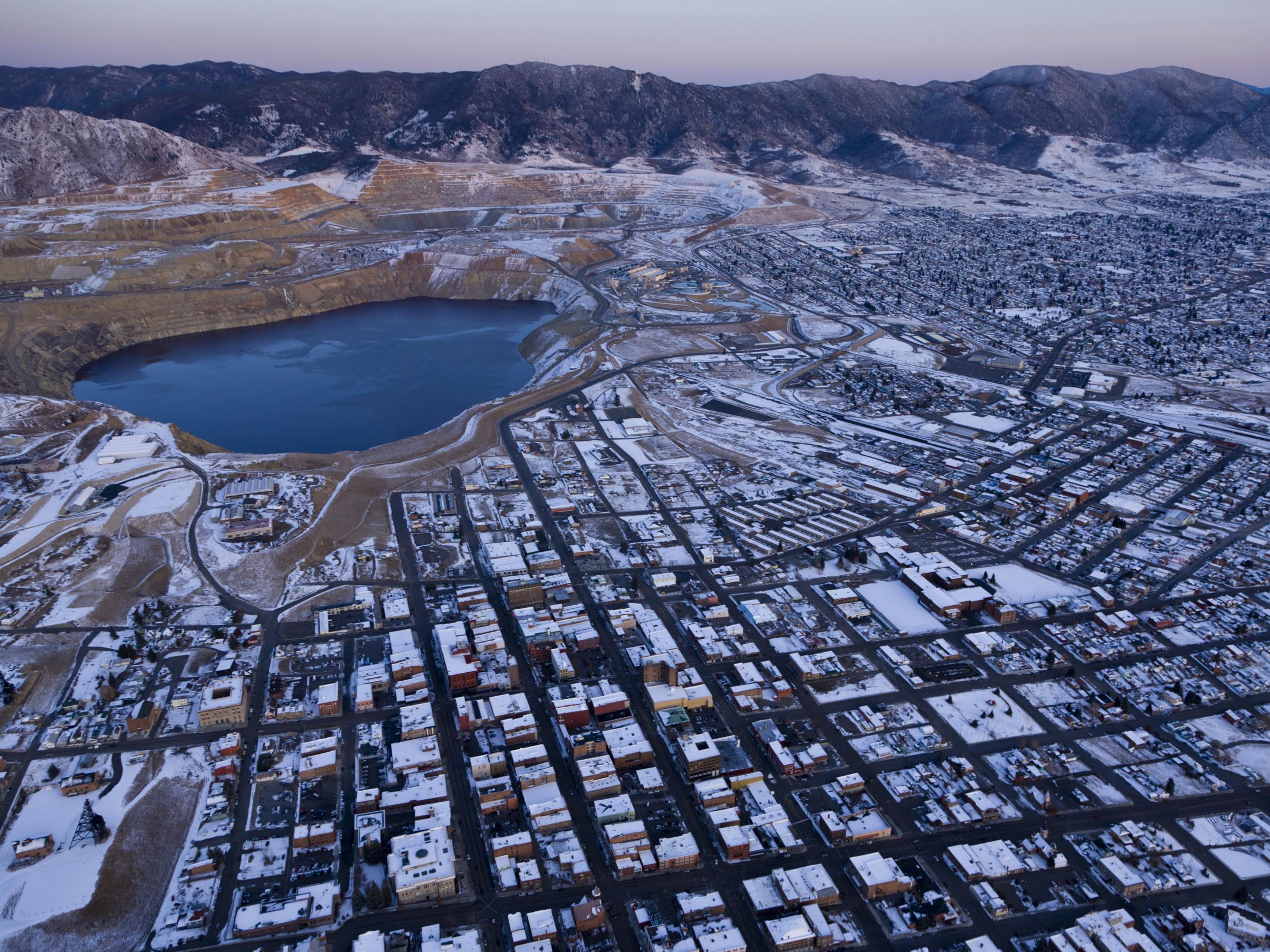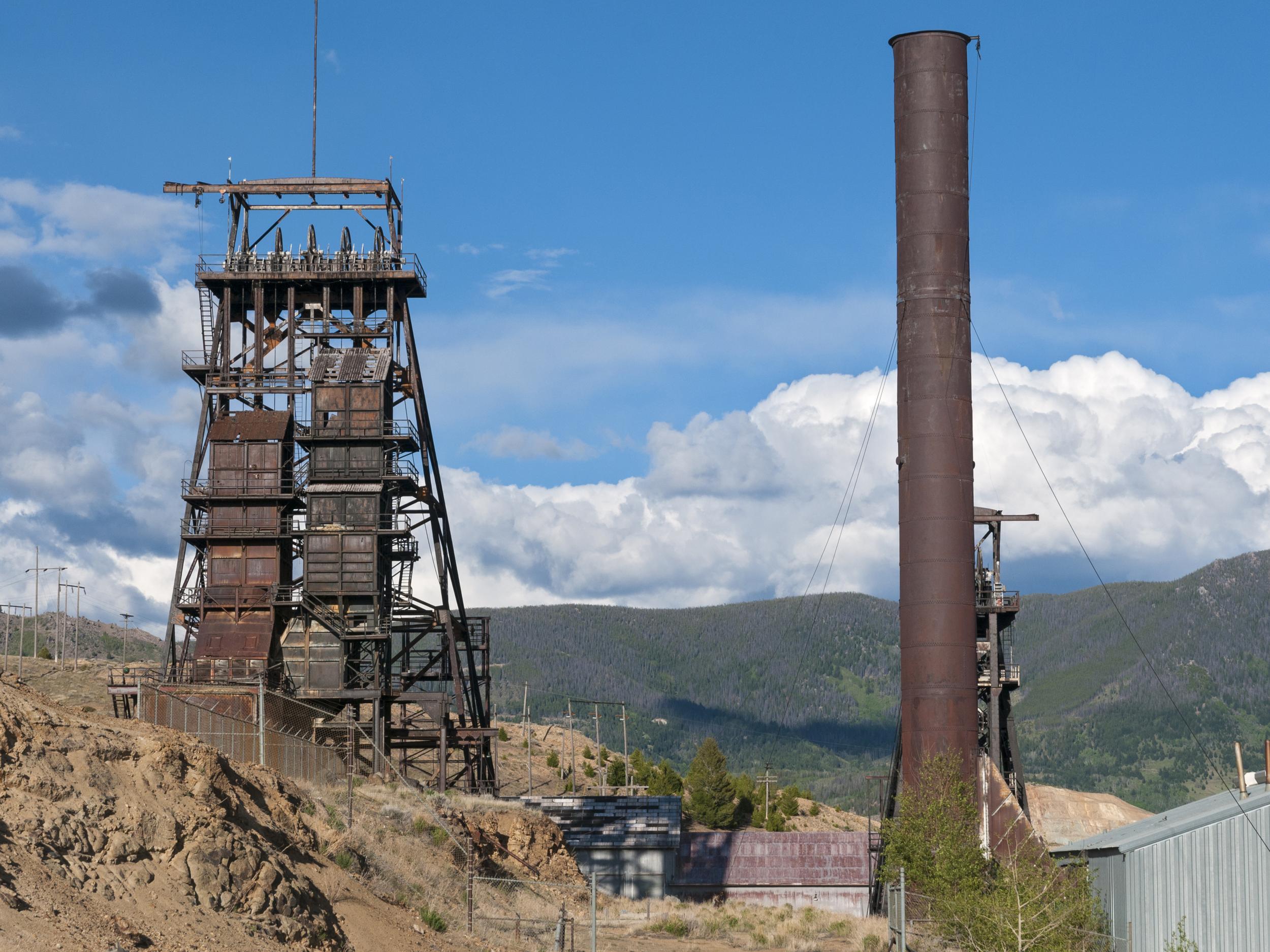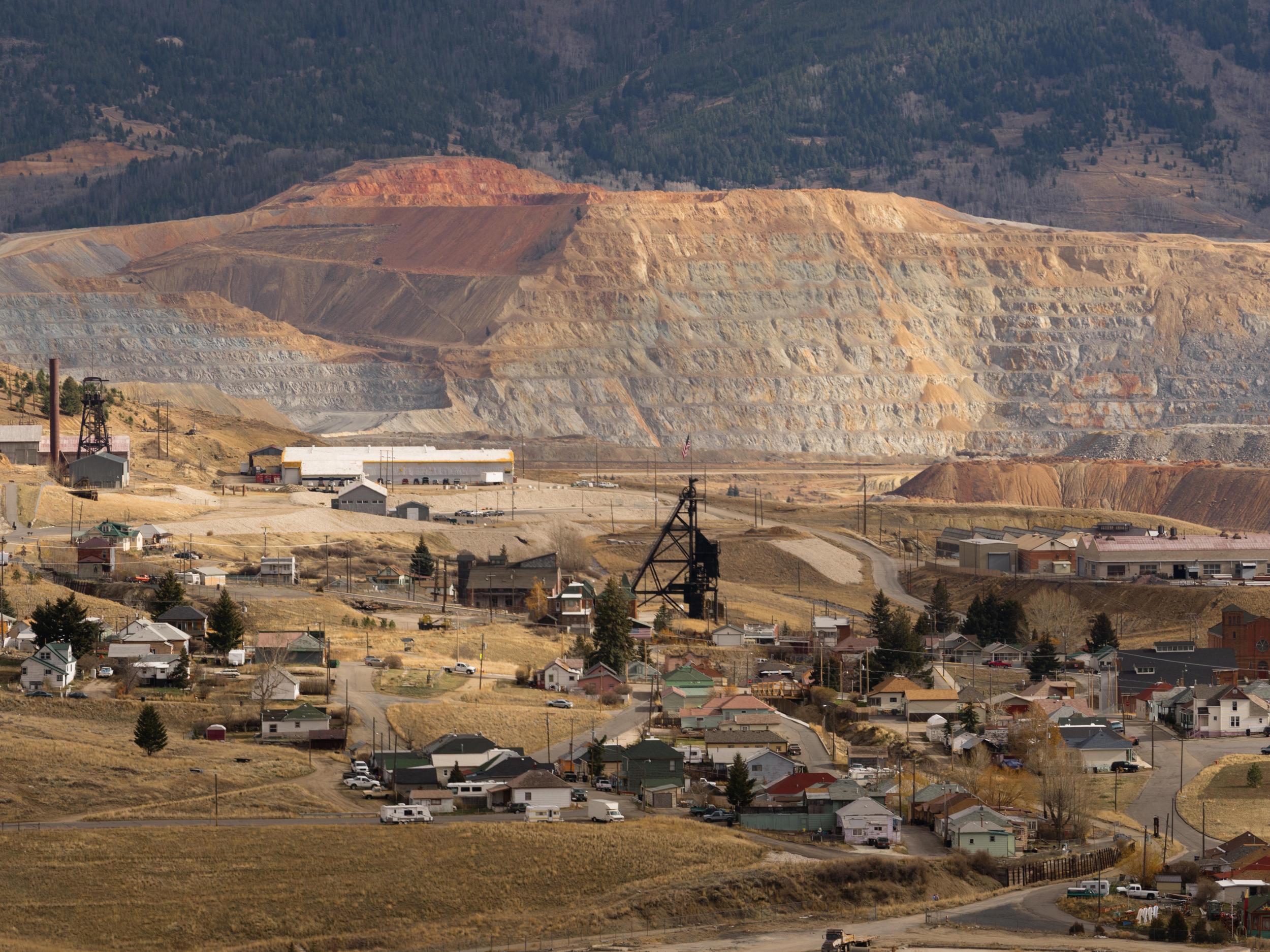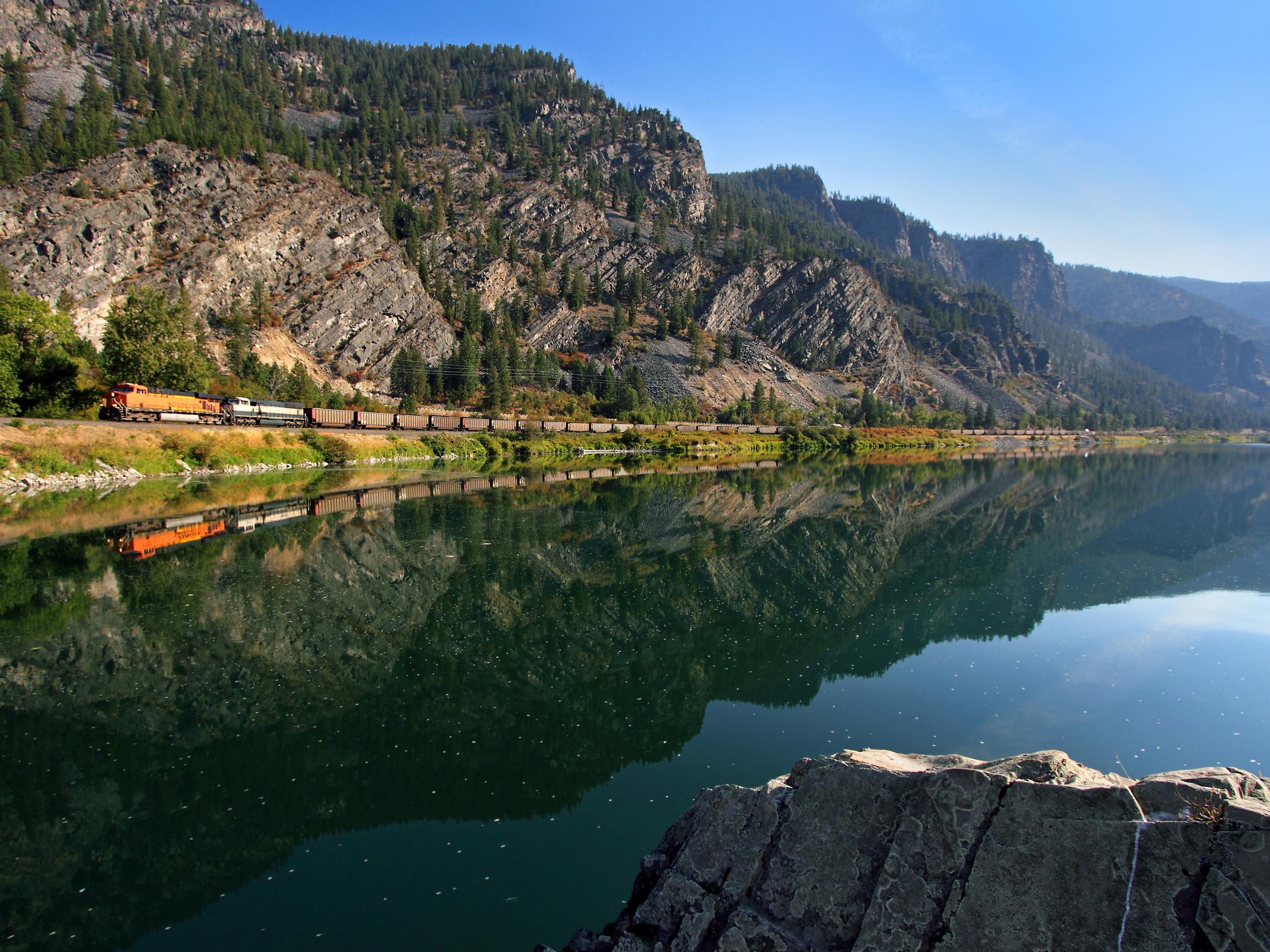The last mile: Butte's fight to restore its toxic creek
It’s taken two decades to clean up most of Silver Bow Creek, polluted from a century of mining. Now some Butte residents want the final stretch restored, to babble on through the city

Your support helps us to tell the story
From reproductive rights to climate change to Big Tech, The Independent is on the ground when the story is developing. Whether it's investigating the financials of Elon Musk's pro-Trump PAC or producing our latest documentary, 'The A Word', which shines a light on the American women fighting for reproductive rights, we know how important it is to parse out the facts from the messaging.
At such a critical moment in US history, we need reporters on the ground. Your donation allows us to keep sending journalists to speak to both sides of the story.
The Independent is trusted by Americans across the entire political spectrum. And unlike many other quality news outlets, we choose not to lock Americans out of our reporting and analysis with paywalls. We believe quality journalism should be available to everyone, paid for by those who can afford it.
Your support makes all the difference.The first flecks of gold found here in 1864 were along a creek whose meanders, sparkling in the sun, earned it the name Silver Bow.
The discovery turned into a full-blown gold rush and in the 1860s, swarms of miners tore at the tiny stream for its riches.
Butte, though, was birthed from the “copper womb,” as one poet wrote, a far richer lode. After thousands of miles of tunnels were dynamited and drilled, a giant open pit copper mine was dug near the headwaters of the creek.
Over the years, the stream was polluted beyond recognition. Mine waste was dumped into it from smoke-belching factories that concentrated ore, and the creek was rerouted and tapped to satisfy industrial demands. A massive flood in 1908 washed tons of waste along the length of the creek.
Raw sewage ran into it until the 1960s. Most life in the stream and along its banks was wiped out. Along the banks of the Silver Bow, cattle bones turned an almost neon blue-green from high levels of copper in the water.
“Since I can remember, people have always said, ‘Don’t go near Silver Bow Creek,'” said Ellen Crain, director of the Butte Silver Bow Public Archives, which chronicles the mining history here.

For the last two decades, though, most of Silver Bow Creek has been meticulously rebuilt and restored by removing more than one million cubic yards of tainted soil and rock along most of its stretch, at a cost of about $150m.
Now just two miles or so of the battered creek is unreclaimed – including a stretch that runs through neighbourhoods in this city. In late May, after eight years of court-ordered secrecy surrounding the cleanup, some of the veil was lifted and the Environmental Protection Agency released its plan for finishing it.
A portion will be rerouted, this time to serve ecological goals. But there are no plans to restore the last mile of Silver Bow, running through some neighbourhoods. And that has led to more upset in this town of 34,000.
“I want to see a clean, restored and meandering Silver Bow Creek through town,” said Fritz Daily, a former state legislator who once worked in the mines and is now head of the Silver Bow Creek Headwaters Coalition. “We not only want and need a clean, meandering creek, we are entitled to it.”
The mining of what was called “the richest hill on earth” went on for more than a century. The copper pulled from here electrified the nation and provided wartime material, making the Anaconda Copper Co. all powerful in Montana, and it did as it wished.
As mining wound down, Anaconda was purchased by the Atlantic Richfield Co. The company soon shuttered the mine, and became saddled with the largest Superfund complex in the United States: toxic sites sprawled across western Montana.

They included the giant copper smelter at Anaconda; contaminated soil around the city of Butte; the yawning Berkeley Pit; the 120-mile-long Clark Fork River and Milltown dam – which has since been removed – and Silver Bow, a tributary to the river.
Silver Bow Creek was once 26 or so miles long from its headwaters on the Continental Divide, where a tiny thread of water joined Yankee Doodle and Dixie creeks, each worked by miners from opposing sides in the Civil War.
Some 24 miles of the creek below Butte, all the way to where it flows into the Clark Fork River and on to the Columbia River, have been restored.
It’s far cleaner, but will never be its old self. There are, in the best stretches, some 200 catchable fish per mile, while comparable streams have 1,000 per mile.
Nonetheless, Butte loves its reclaimed Silver Bow. On a recent grey spring morning, mallards paddled around in the reclaimed section of stream and small fish, darting like shadows, could be seen. Hiking trails and picnic tables invite visitors.
“If someone had told me 20 years ago I’d be catching trout here, I’d have taken that bet,” said Matt Vincent, a former local government executive nd now a consultant who has been working on the cleanup for two decades, as he stood on the bank.
The recently announced plan calls for the portion of Silver Bow that flows through Slag Canyon – whose walls are made of mine waste – to be rerouted into a new channel away from the waste’s toxic soils.
The plan also calls for cleaning up hundreds of thousands of cubic yards of buried mine waste along the creek’s route.
It is a relief for many who feared that the confidential negotiations among the state, the EPA and officials from Atlantic Richfield would leave vast amounts of mine tailings waste, or ore waste, in the ground where it was dumped by mining companies.
Many here simply do not trust the science that found that “waste in place” is a safe alternative. In fact, some buried tailings have been leaching contaminated water the colour of blue Gatorade into the reclaimed creek.
They are to be dug up and taken away in the coming months, to property owned by a mining company here.
But there is still concern that there is no plan to reclaim the last mile of the little creek. In a state famous for pristine trout streams and the film A River Runs Through It, those who support a flowing, babbling last mile see it as a way to transform Butte from being one of the country’s largest Superfund sites (locations requiring, in the EPA's opinion, a long-term response to hazardous material contaminations), to something more befitting.
Upper Silver Bow, in east central Butte, has a long way to go. It is a shadow of its former self, dry and rerouted and looking like little more than a undistinguished ditch.
Until two years ago, it was officially called the Metro Storm Drain, until Daily and others won a four-year court battle against the state to have it renamed Silver Bow Creek, so the state would be required to restore it.

What is a new creek worth? The price tag for cleanup is now about $8m per stream mile.
A clean creek and the tailings removal would help Butte reduce its toxic stigma, Daily said, and symbolise a new start.
At football and other sporting events, Butte teams are taunted by cries of “dirty water,” and it is difficult to recruit health care professionals to the country’s largest Superfund complex, he added. “There’s still work to do,” he said.
Jon Sesso, the Butte Silver Bow Superfund coordinator, said that even though there is no plan for a new creek, he is hopeful it will come about in several years, once the nearby tailings are removed. “It’s complicated,” he said.
“There’s no headwaters, no water you can count on. It’s flat as a pancake east to west through that corridor, and you can’t change topography,” so a creek may not flow, and there are not headwaters because they are cut off from the creek.
But there is a water source if it can be secured: the Berkeley Pit, the mile-wide hole on the edge of Butte where copper was once mined.
Since Atlantic Richfield turned off the pumps that kept the giant pit dry for mining in 1982, it has been filling with a witch’s brew of groundwater. In 2016, the pit made headlines when thousands of exhausted migrating snow geese landed on it and died from drinking acidic water.
When a new treatment plant is finished, about 7 million gallons of clean water a day will be pumped out from the 50 billion gallons in the pit. It is hoped it will become the new “headwaters” for the last mile of Silver Bow Creek.
It might work. Because the toxic water in the pit will contaminate the ground water if it continues to fill, water must be pumped out of the pit and treated – in perpetuity – to keep it from reaching that level. Atlantic Richfield has created a fund to maintain the treatment plant forever.
Daily said that he and others will continue to push for the stream to flow through the heart of Butte. “We’re at a crossroads,” Daily said.
“If cleaning up the creek and waste and the quality of the water in the pit do not happen, this community is going to fail economically, environmentally and socially.”
© New York Times
Join our commenting forum
Join thought-provoking conversations, follow other Independent readers and see their replies
Comments